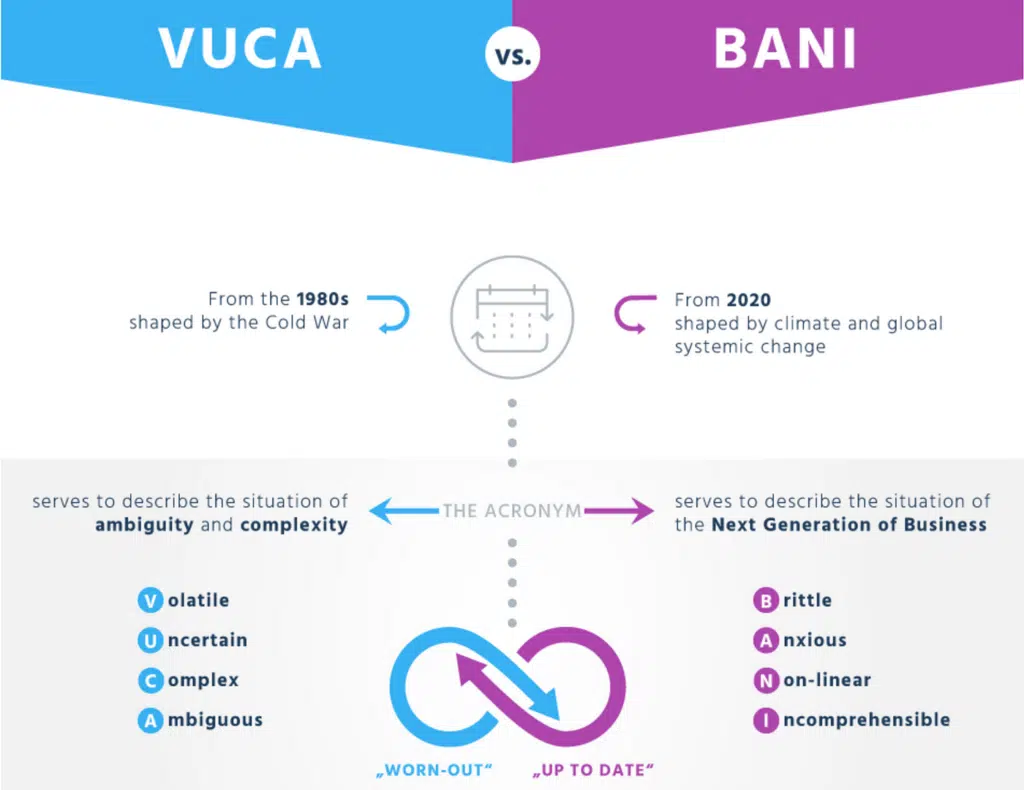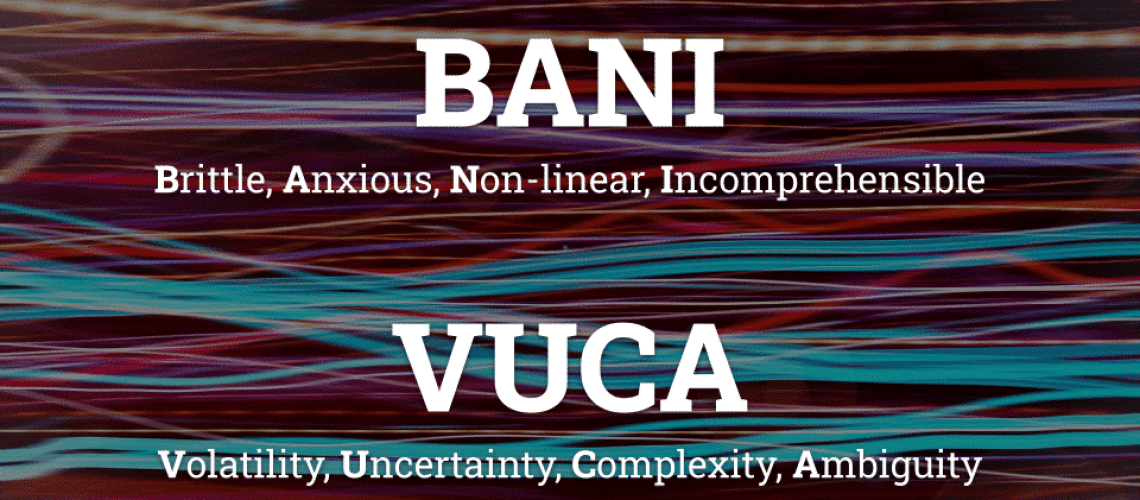What once was a stable reality for some, will never be again for most; A stable growing economy, a job for life and an ever growing need for the products we create for the world are not a certainty anymore, and for some, have never been. We have gotten used to change being a constant now, and what we used to describe as a VUCA world, is making place for an even more difficult to predict reality of today.
Welcome to the new reality of ever-changing realities
It’s no secret that the landscape of the business world is changing at a rapid pace, and to survive and thrive, organizations must be equipped with the right tools and knowledge.
VUCA and BANI are two popular frameworks often used to describe the challenges and uncertainties of this rapidly changing environment. Let’s take a closer look at these frameworks and what they mean for businesses today.
First up is VUCA !
You might think it sounds like a fancy acronym for a hot new workout trend, but VUCA actually stands for Volatility, Uncertainty, Complexity, and Ambiguity. Developed by the US Army War College in the 1990s, it was used to describe the unpredictable and rapidly changing geopolitical landscape that followed the end of the Cold War. Today, it’s used to describe the challenges and uncertainties that organizations face in a wide range of contexts, from economic and political changes to technological disruption and global pandemics.
Volatility is all about the rate and magnitude of change in the business environment. Uncertainty describes the lack of predictability and the inability to know what will happen in the future. Complexity refers to the interconnectedness and interdependence of different factors in the business environment. And finally, ambiguity describes the lack of clarity and the existence of multiple interpretations and perspectives.
Let's move on to BANI
BANI stands for Brittle, Anxious, Nonlinear, and Incomprehensible.
Developed by futurist and author Jamais Cascio, BANI emphasizes the fragility and vulnerability of organizations in the face of unpredictable and nonlinear change, as well as the need for flexibility and adaptability in the face of uncertainty.
Brittle refers to the potential for systems and structures to break under stress and pressure. Anxious describes the emotional and psychological toll that uncertainty and unpredictability can have on individuals and organizations. Nonlinear refers to the fact that small changes can have big and unpredictable effects in complex systems. And last but not least, incomprehensible describes the fact that some changes may be impossible to understand or predict, and that organizations may need to develop new ways of thinking and operating in order to adapt.

Similar and different at the same time !
The VUCA framework focuses on the challenges of the business environment and the need for adaptability, while the BANI framework focuses on the drivers of change and the need for innovation. VUCA is more concerned with the internal workings of the business, while BANI is more concerned with the external forces that are driving change.
So how can businesses apply these frameworks in practice? The VUCA framework is often used by businesses to develop strategic plans that are adaptable to changing circumstances. On the other hand, the BANI framework is often used by businesses to identify emerging trends and opportunities for innovation.
A changing and unpredictable world
Those two frameworks can be valuable tools for businesses looking to navigate the challenges of the corporate landscape. The VUCA framework emphasizes the need for adaptability and flexibility, while the BANI framework emphasizes the need for innovation and awareness of emerging trends.
The key takeaway here is that businesses need to be equipped with the right tools and knowledge in order to thrive in today’s business environment. Whether you’re a small startup or a large corporation, understanding the challenges of volatility, uncertainty, complexity, and ambiguity, as well as the drivers of change, is essential. So, take a deep breath, stay flexible and adaptable, and keep your finger on the pulse of emerging trends. With the right mindset and approach, your business can not only survive, but thrive in this fast-paced and ever-changing world.







